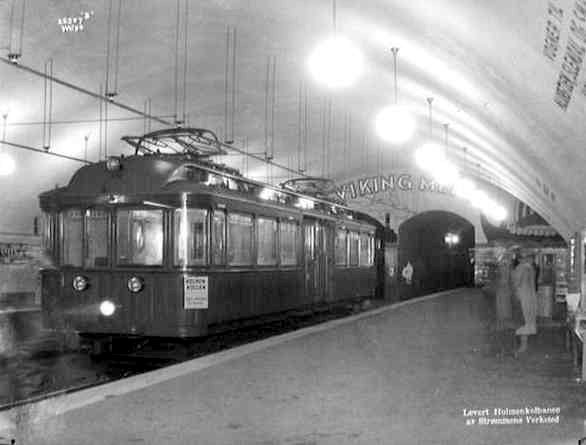|
Kalbakken
Kalbakken is a neighborhood in Grorud borough, Oslo, Norway. Kalbakken station on the Oslo Metro The Oslo Metro ( no, Oslo T-bane or or simply ) is the rapid transit system of Oslo, Norway, operated by Sporveien T-banen on contract from the transit authority Ruter. The network consists of five lines that all run through the city centre, w ... also serves the adjacent districts Nordtvet and Flaen between Trondheimsveien and Østre Aker vei, which are Groruddalens main thoroughfares into the city center. Flaen and Kalbakken were developed as satellite towns of Oslo in the 1950s. Economy: Kalbakken has a farm.https://www.oslodebatten.no/jeg-flyttet-til-det-forhandsdomte-utskjelte-og-neglisjerte-stedet-i-oslo/o/5-131-11237 . oslodebatten.no. Retrieved 2022-09-18. " ..de to innfartsårene til Oslo skjuler det seg et boligfelt med hager og fine hus, nærbutikker, .. svømmehall, samfunnshus, ungdomsklubb, barnehage, Hageland og ikke minst: Nordtvet gård." References {{com ... [...More Info...] [...Related Items...] OR: [Wikipedia] [Google] [Baidu] |
Kalbakken (station)
Kalbakken is the station on Grorud Line of the Oslo Metro between Rødtvet Rødtvet is a residential area in the district of Grorud in Oslo, located just southwest of Grorud proper. The area was urbanized from the mid 1960s, and connected to the city centre with metro line 5 from 1966. Rødtvet has the forest Lillomark ... and Ammerud. It is located in the Grorud borough. Kalbakken is part of the original stretch of the Grorud Line opened 16 October 1966. The Kalbakken neighbourhood is mostly residential. The subway station is located on a hill on the north side and much of the neighbourhood is within reasonable walking distance, such as the general shopping and food stores. The neighbourhood also has a riding school, a library, a public swimming pool and activity centers for both seniors and adolescents, all of which are located in the Nordtvet area of Kalbakken. References External links Oslo Metro stations in Oslo Railway stations opened in 1966 1966 establis ... [...More Info...] [...Related Items...] OR: [Wikipedia] [Google] [Baidu] |
Oslo Metro
The Oslo Metro ( no, Oslo T-bane or or simply ) is the rapid transit system of Oslo, Norway, operated by Sporveien T-banen on contract from the transit authority Ruter. The network consists of five lines that all run through the city centre, with a total length of , serving 101 stations of which 17 are underground or indoors. In addition to serving 14 out of the 15 boroughs of Oslo, two lines run to Kolsås and Østerås, in the neighboring municipality of Bærum. In 2016, the system had an annual ridership of 118 million. The first rapid transit line, the Holmenkollen Line, opened in 1898, with the branch Røa Line opening in 1912. It became the first Nordic underground rapid transit system in 1928, when the underground line to Nationaltheatret was opened. After 1993 trains ran under the city between the eastern and western networks in the Common Tunnel, followed by the 2006 opening of the Ring Line. All the trains are operated with MX3000 stock. These replaced the older ... [...More Info...] [...Related Items...] OR: [Wikipedia] [Google] [Baidu] |
Grorud
Grorud is a borough of the city of Oslo, Norway. The borough contains the Ammerud, Grorud, Kalbakken, Rødtvet, Nordtvet and Romsås areas. To the north of the borough is the forest of Lillomarka. The borough is the smallest in Oslo, with fewer than 30 000 inhabitants. The area now known as Grorud was mostly farm land until after World War II, an exception being Grorud proper, where mining was an important livelihood. Granite from Grorud is seen in many buildings in downtown Oslo - with the lion sculptures in front of Stortinget, the Norwegian Parliament being the most famous example. Textile industries were also a part of the urbanization of Grorud, with the river Alna and its waterfalls as power supply. The railway station at Grorud, from 1854, is one of the oldest in Norway and was a hub of the whole Grorud Valley for many years until the arrival of urbanization and the subway. Some of the old farms are still present in the Grorud landscape, although apartment buildings n ... [...More Info...] [...Related Items...] OR: [Wikipedia] [Google] [Baidu] |
Satellite Town
Satellite cities or satellite towns are smaller municipalities that are adjacent to a principal city which is the core of a metropolitan area. They differ from mere suburbs, subdivisions and especially bedroom communities in that they have municipal governments distinct from that of the core metropolis and employment bases sufficient to support their residential populations. Conceptually, satellite cities could be self-sufficient communities outside of their larger metropolitan areas. However, functioning as part of a metropolis, a satellite city experiences cross-commuting (that is, residents commuting out of and employees commuting into the city). Satellite cities versus other types of settlement Satellite cities are different from and are sometimes confused with the following related patterns of development. Suburbs Satellite cities differ from suburbs in that they have distinct employment bases, commutersheds, and cultural offerings from the central metropolis, as well ... [...More Info...] [...Related Items...] OR: [Wikipedia] [Google] [Baidu] |
Store Norske Leksikon
The ''Great Norwegian Encyclopedia'' ( no, Store Norske Leksikon, abbreviated ''SNL''), is a Norwegian-language online encyclopedia. The online encyclopedia is among the most-read Norwegian published sites, with more than two million unique visitors per month. Paper editions 1978–2007 The ''SNL'' was created in 1978, when the two publishing houses Aschehoug and Gyldendal merged their encyclopedias and created the company Kunnskapsforlaget. Up until 1978 the two publishing houses of Aschehoug and Gyldendal, Norway's two largest, had published ' and ', respectively. The respective first editions were published in 1907–1913 (Aschehoug) and 1933–1934 (Gyldendal). The slump in sales for paper-based encyclopedias around the turn of the 21st century hit Kunnskapsforlaget hard, but a fourth edition of the paper encyclopedia was secured by a grant of ten million Norwegian kroner from the foundation Fritt Ord in 2003. The fourth edition consisted of 16 volumes, a t ... [...More Info...] [...Related Items...] OR: [Wikipedia] [Google] [Baidu] |



